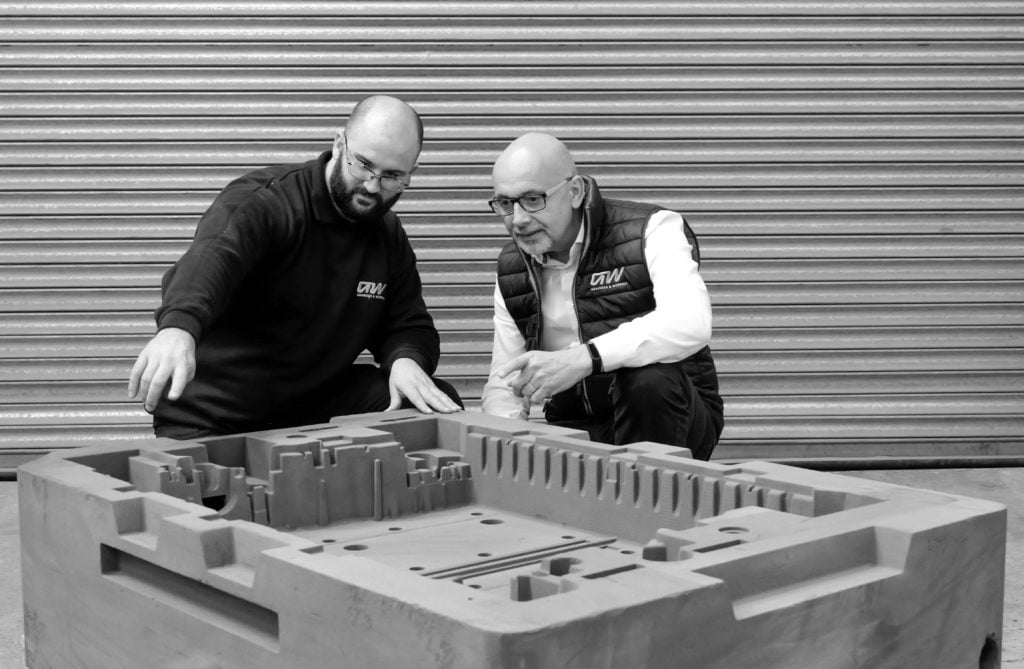Why are sand moulds used in sand casting?
An overview of moulds used in sand casting, including the design considerations required.
What are sand moulds?
Sand casting uses a mould made from sand which contains the cavity where molten metal such as iron and aluminium is poured. The mould is made from compacted sand.
How are moulds for sand casting made?
Mould making creates the mould out of sand that will contain the molten metal. The mould is composed of two parts: a cope and a drag. To create the pattern, the pattern is filled with sand, and then removed.
Cores and gating systems (these allow the molten material to optimally flow through to the mould) are placed in the drag. The cope holds the sprue which is used to add the molten metal into the mould. To close the mould, the cope is put on top of the drag, then both parts are clamped together.

How do you choose the form and construction of the mould?
Choosing whether the mould should be printed, hybrid or fully tooled, as well as if it needs to accommodate chills is determined by what you require from your part or prototype. Some processes aren’t replicable for production. For example, some processes and moulds will be suited to high complexity/high value products, and some won 't - it depends what outcomes you require.
What sand type should the mould be made from?
A variety of sand types can be used to create the moulds for the sand casting process, allowing designers and engineers to meet specified requirements for grain size, surface finish and rate of solidification required for part functionality. Sand types include silica, mineral sand and zircon sand.
Read more: Designing a high quality sand casting with DFM
Read more: What are the most common casting methods?
Can moulds include other materials in addition to sand?
Yes. Moulds can also include other materials, for example steel, ceramic, iron or copper chills to enhance solidification rates and the mechanical properties of the part. This highlights the flexibility of the sand casting process to optimise for design function and casting quality at almost every stage.

How does sand type used in a mould impact the surface finish of the casting?
Sand type has a huge impact. Different sand types influences cost of the casting, as well as properties for strength and recyclability.
Grain size also has an impact, and is distinct from sand type. The average sand grain is 180 - 200 microns. Different grain sizes create different properties for the part. A finer sand grain delivers a smoother surface finish as the grains can be packed more tightly together.
However, a smooth surface finish can also be less permeable, risking gas entrainment and
part distortion. Internal features can benefit from having a coarser, more permeable finish
which allows gas to be removed from the core. Here a sand with larger grain size would be more suitable.
Read more: Post processing options for sand castings
 Get in touch
Get in touch
